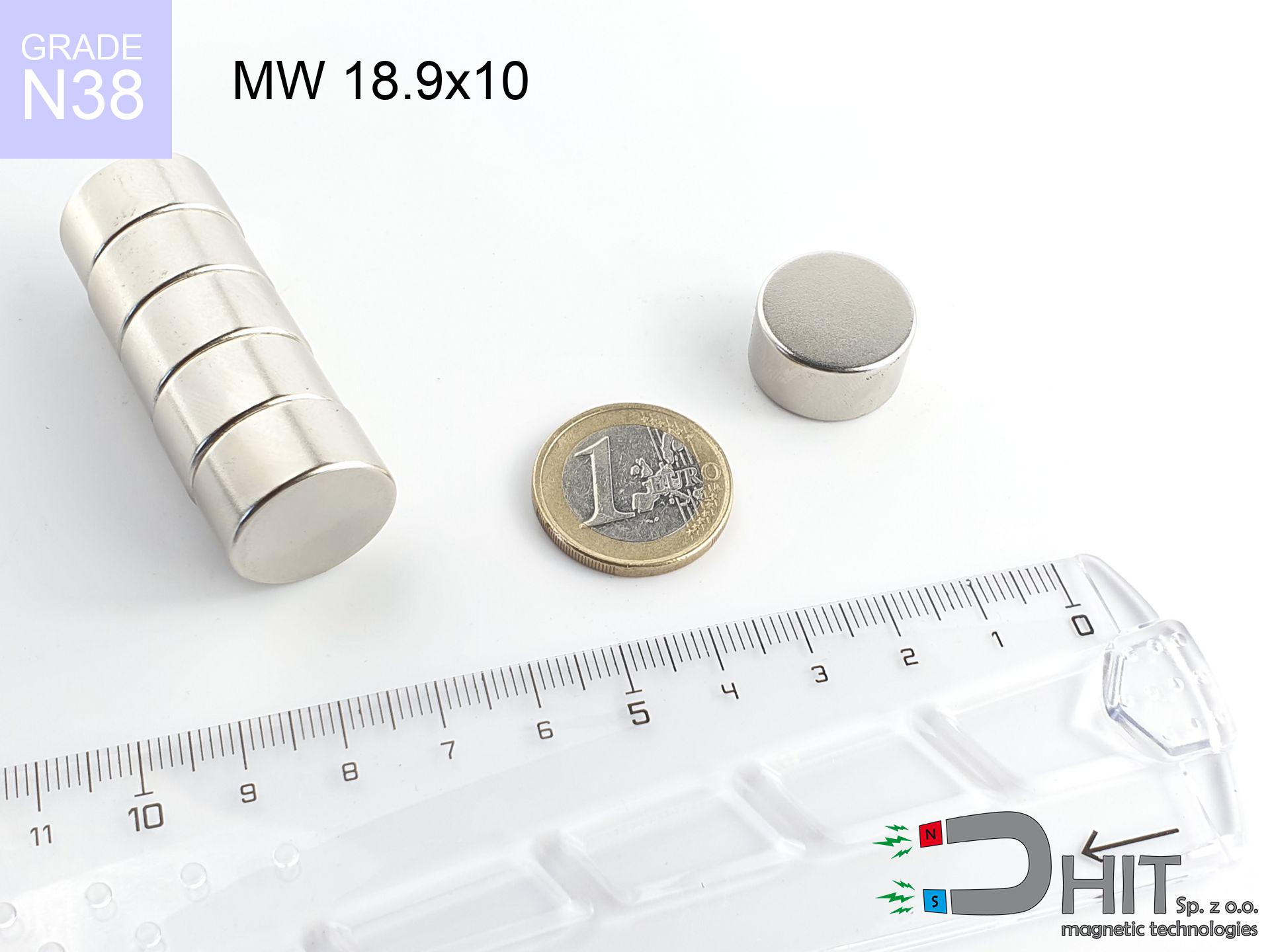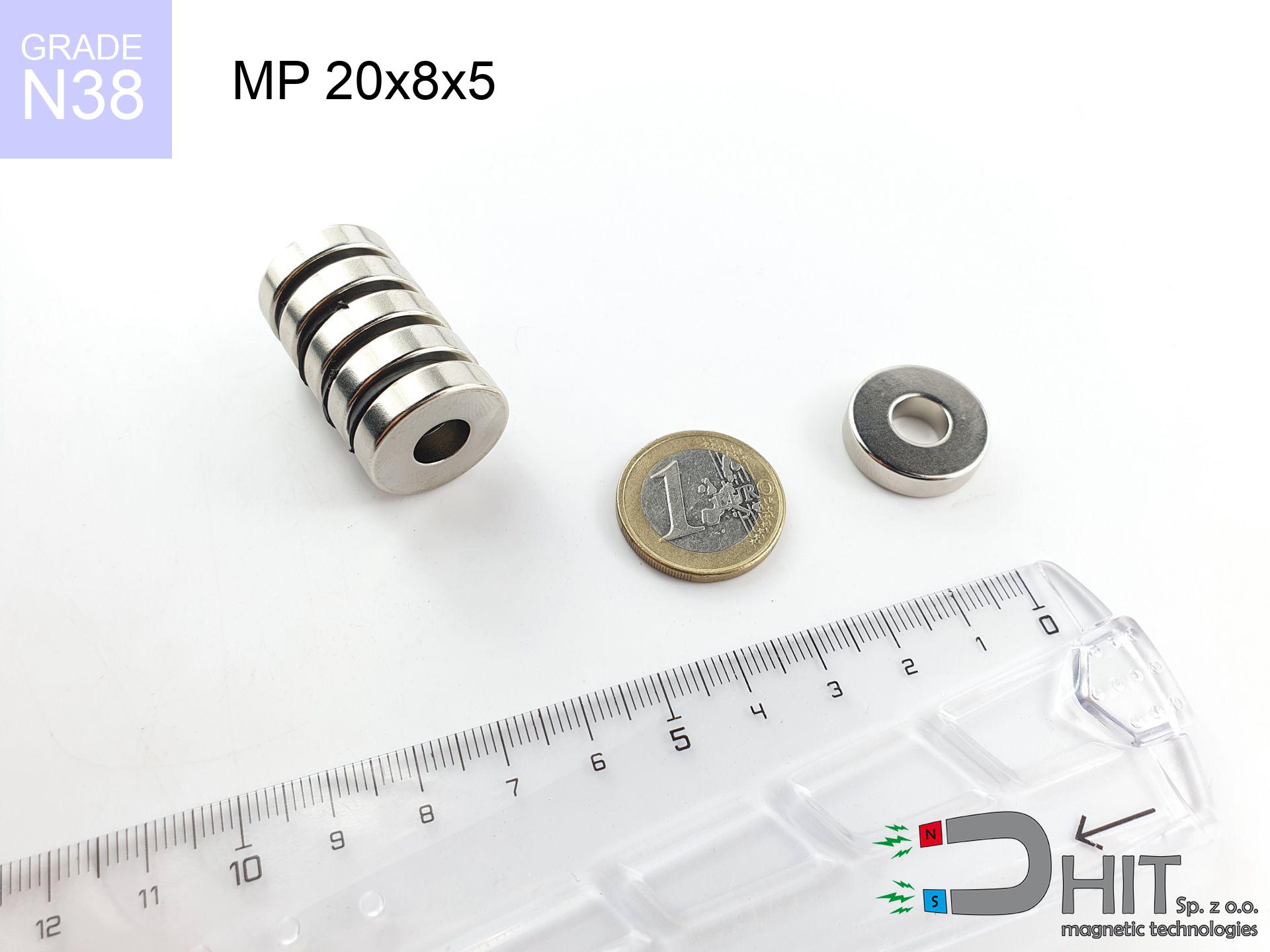LM TLN - 22 SQ / N38 - magnetic leviton
magnetic leviton
Catalog no 290494
GTIN: 5906301814528
Weight
1000 g
Looking for a better price?
Call us now
+48 22 499 98 98
otherwise drop us a message through
inquiry form
through our site.
Parameters and structure of magnetic components can be reviewed using our
magnetic calculator.
Same-day processing for orders placed before 14:00.
Magnetic properties of material N38
Physical properties of sintered neodymium magnets Nd2Fe14B at 20°C
Shopping tips
Pros as well as cons of rare earth magnets.
Apart from their superior magnetism, neodymium magnets have these key benefits:
- Their magnetic field is maintained, and after around ten years it drops only by ~1% (theoretically),
- They feature excellent resistance to magnetic field loss as a result of external magnetic sources,
- A magnet with a shiny silver surface has better aesthetics,
- The surface of neodymium magnets generates a unique magnetic field – this is a distinguishing feature,
- Neodymium magnets are characterized by extremely high magnetic induction on the magnet surface and are able to act (depending on the shape) even at a temperature of 230°C or more...
- Thanks to freedom in shaping and the capacity to adapt to individual projects,
- Key role in modern industrial fields – they find application in data components, motor assemblies, medical devices, as well as other advanced devices.
- Thanks to their power density, small magnets offer high operating force, occupying minimum space,
Characteristics of disadvantages of neodymium magnets: tips and applications.
- To avoid cracks upon strong impacts, we recommend using special steel holders. Such a solution secures the magnet and simultaneously increases its durability.
- NdFeB magnets demagnetize when exposed to high temperatures. After reaching 80°C, many of them experience permanent weakening of power (a factor is the shape as well as dimensions of the magnet). We offer magnets specially adapted to work at temperatures up to 230°C marked [AH], which are extremely resistant to heat
- They oxidize in a humid environment - during use outdoors we advise using waterproof magnets e.g. in rubber, plastic
- Due to limitations in realizing threads and complicated shapes in magnets, we propose using casing - magnetic mount.
- Potential hazard to health – tiny shards of magnets can be dangerous, if swallowed, which becomes key in the aspect of protecting the youngest. It is also worth noting that small elements of these devices are able to be problematic in diagnostics medical in case of swallowing.
- Higher cost of purchase is one of the disadvantages compared to ceramic magnets, especially in budget applications
Maximum holding power of the magnet – what contributes to it?
Information about lifting capacity is the result of a measurement for the most favorable conditions, including:
- using a plate made of high-permeability steel, serving as a circuit closing element
- whose thickness equals approx. 10 mm
- characterized by lack of roughness
- without any clearance between the magnet and steel
- for force applied at a right angle (pull-off, not shear)
- at standard ambient temperature
Practical lifting capacity: influencing factors
Bear in mind that the magnet holding will differ depending on the following factors, starting with the most relevant:
- Space between surfaces – even a fraction of a millimeter of distance (caused e.g. by varnish or dirt) significantly weakens the magnet efficiency, often by half at just 0.5 mm.
- Force direction – catalog parameter refers to detachment vertically. When applying parallel force, the magnet holds much less (often approx. 20-30% of maximum force).
- Metal thickness – thin material does not allow full use of the magnet. Magnetic flux passes through the material instead of generating force.
- Steel type – mild steel attracts best. Higher carbon content decrease magnetic permeability and lifting capacity.
- Base smoothness – the more even the surface, the larger the contact zone and stronger the hold. Unevenness creates an air distance.
- Temperature – temperature increase causes a temporary drop of force. Check the thermal limit for a given model.
* Holding force was measured on the plate surface of 20 mm thickness, when a perpendicular force was applied, however under parallel forces the load capacity is reduced by as much as fivefold. In addition, even a small distance {between} the magnet and the plate reduces the holding force.
Safety rules for work with neodymium magnets
Avoid contact if allergic
Allergy Notice: The Ni-Cu-Ni coating consists of nickel. If skin irritation happens, cease handling magnets and use protective gear.
Handling rules
Handle magnets consciously. Their powerful strength can surprise even experienced users. Be vigilant and do not underestimate their force.
Choking Hazard
Product intended for adults. Small elements can be swallowed, causing severe trauma. Keep out of reach of kids and pets.
Electronic hazard
Intense magnetic fields can destroy records on payment cards, hard drives, and other magnetic media. Stay away of min. 10 cm.
Beware of splinters
Protect your eyes. Magnets can fracture upon uncontrolled impact, launching sharp fragments into the air. Wear goggles.
Thermal limits
Regular neodymium magnets (N-type) lose magnetization when the temperature surpasses 80°C. This process is irreversible.
Impact on smartphones
A strong magnetic field interferes with the operation of compasses in smartphones and GPS navigation. Maintain magnets near a smartphone to prevent damaging the sensors.
ICD Warning
People with a ICD should maintain an absolute distance from magnets. The magnetic field can stop the operation of the implant.
Pinching danger
Watch your fingers. Two large magnets will join immediately with a force of several hundred kilograms, crushing anything in their path. Exercise extreme caution!
Combustion hazard
Drilling and cutting of neodymium magnets carries a risk of fire hazard. Neodymium dust oxidizes rapidly with oxygen and is hard to extinguish.
Attention!
Need more info? Check our post: Why are neodymium magnets dangerous?





![UMGW 25x17x8 [M5] GW / N38 - magnetic holder internal thread UMGW 25x17x8 [M5] GW / N38 - magnetic holder internal thread](https://cdn3.dhit.pl/graphics/products/um-25x17x8-m5-gw-dob.jpg)


